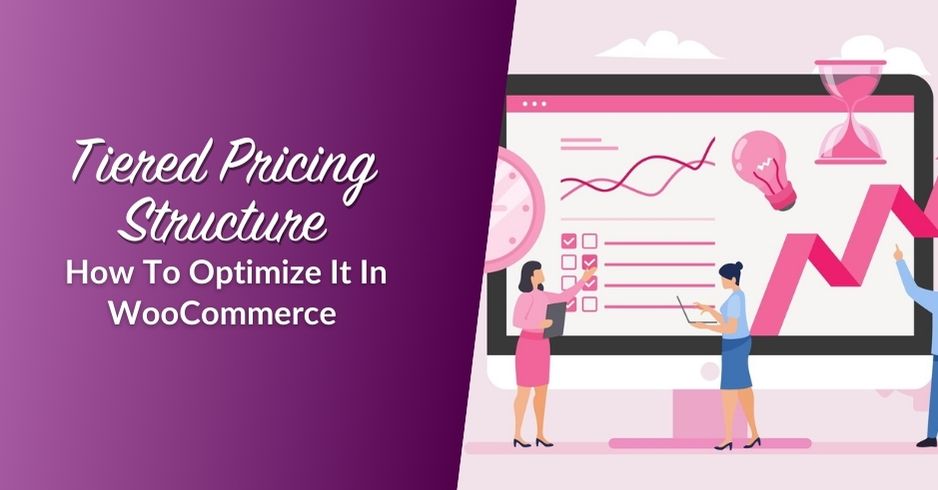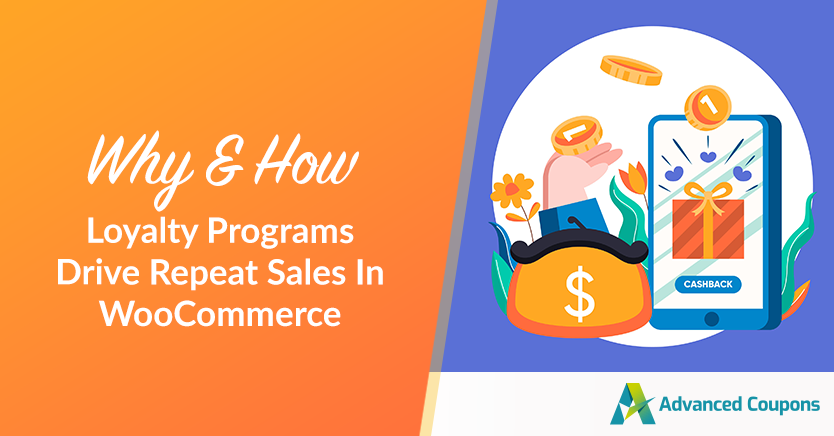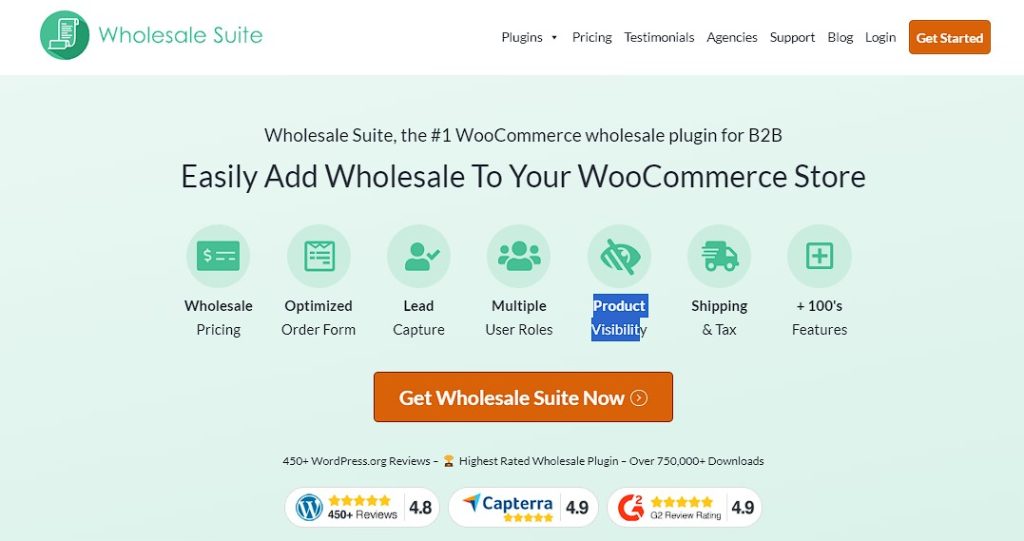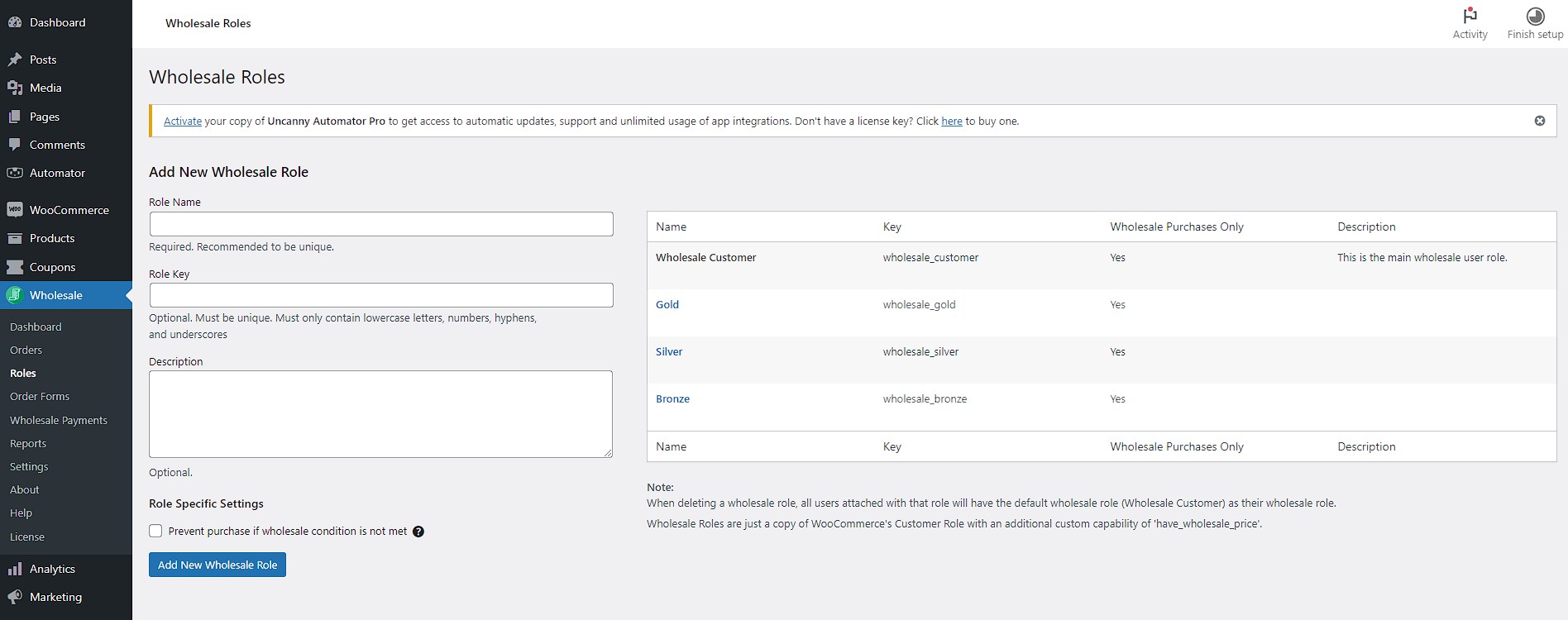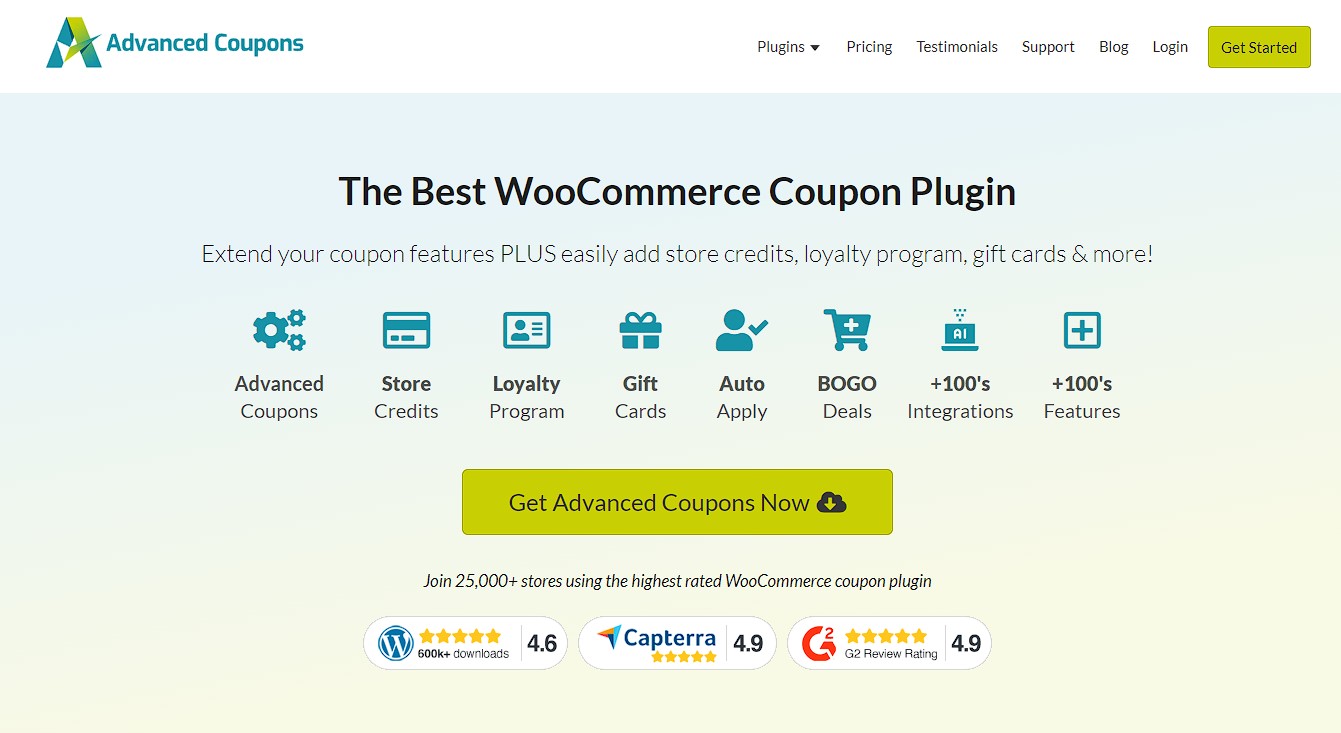There are many reasons why using a tiered pricing structure could be a good choice. For example, if you charge too little, you won’t make enough money to keep your business running. On the other hand, if you charge too much, you might lose a lot of potential customers.
Obviously, you don’t want to make your prices too high for some customers. So, what’s the solution? This is where tiered pricing can really help.
This can help you create a more advanced and successful business model for both you and your customers. Specifically, it allows you to cater to different customer groups based on several factors, and as a result, it gives you an advantage over your competitors.
In this article, we’ll introduce you to tiered pricing structure, show some examples, and share several best practices.
So, let’s get to it!
What Is Tiered Pricing Structure
This is a system where businesses offer different levels of services or products at different prices, depending on how much the customer uses or buys.
For instance, if you run a wholesale business, you could give discounts for bulk orders or adjust prices based on how often customers order. It is often used in competitive markets where businesses want to stand out by offering better or more advanced services at higher prices.
Generally speaking, tiered pricing focuses on offering different levels of service or features to customers at various price points.
How This Model Works
Using this model can be an effective way to attract different types of customers based on their needs and budgets. As a result, it’s a great strategy for growing your customer base.
Furthermore, it can help increase your revenue. You can use it to encourage customers to move to higher-priced tiers as their needs grow.
Moreover, it can also help you manage your costs better. You can offer more expensive features or services to those willing to pay more while keeping costs lower for others.
If you want to learn more about how this works, you can read about how to optimize your WooCommerce tiered pricing strategy.
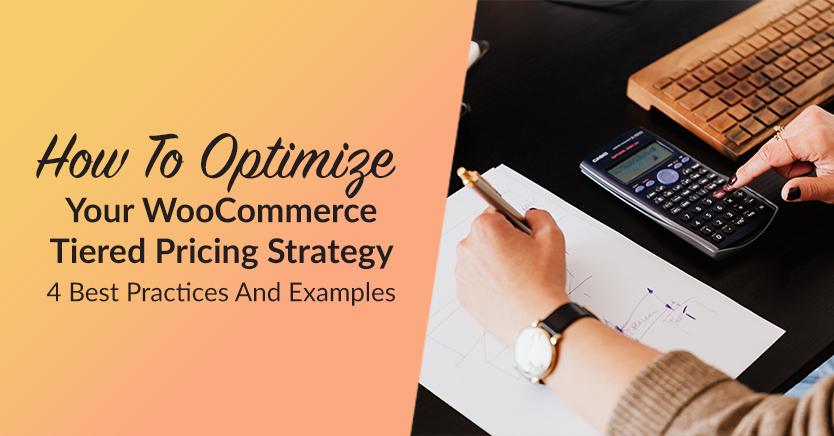
Tiered Pricing Structure Models
1. Three-tier pricing
The three-tier pricing structure offers three different levels, often named something like Basic, Standard, and Premium.
For instance, in a wholesale business, the Basic tier might be the most affordable option which targets smaller retailers or businesses that only need to purchase in small quantities. For example, this tier could offer limited access to a smaller range of products or discounts on orders that meet a lower minimum quantity.
The Standard tier is slightly more expensive and provides additional benefits. For instance, this tier might include access to a broader range of products, better discounts on larger orders, or faster shipping options. It’s designed for medium-sized businesses that have more frequent or larger purchasing needs.
The Premium tier is the most expensive and is aimed at large businesses with complex needs. For example, this tier could offer the best discounts, priority customer service, and access to exclusive products or bulk purchasing options that are not available in the lower tiers.
2. Multiple-tier pricing
Multiple-tier pricing, on the other hand, includes four or more tiers. This approach is ideal for wholesale businesses that serve a wide range of customers with varying needs and budgets.
For example, imagine a wholesale business offering a range of pricing tiers like Bronze, Silver, Gold, Platinum, and Diamond.
The Bronze tier could be for small businesses or startups that are just beginning and may only need to make occasional purchases.
The Silver tier might offer better pricing and access to more products for businesses that are growing and making more frequent orders.
The Gold and Platinum tiers could include even greater discounts, faster shipping, and dedicated account managers, targeting larger businesses that place significant orders regularly.
Finally, the Diamond tier might offer the highest level of service, including the best discounts, custom product options, and priority support, designed for the largest clients with the most complex needs.
Examples And Application
There are several ways businesses can set up a tiered pricing model for their customers. One common method is offering discounts for bulk purchases.
For instance, if you want to create a quantity-based discount, Wholesale Prices Premium makes it simple. You can easily set up a percentage discount based on the amount a customer buys.
With this tool, you can apply the discount to various settings. All you need to do is select the wholesale role, then set the discount along with the minimum and maximum quantities required for the deal.
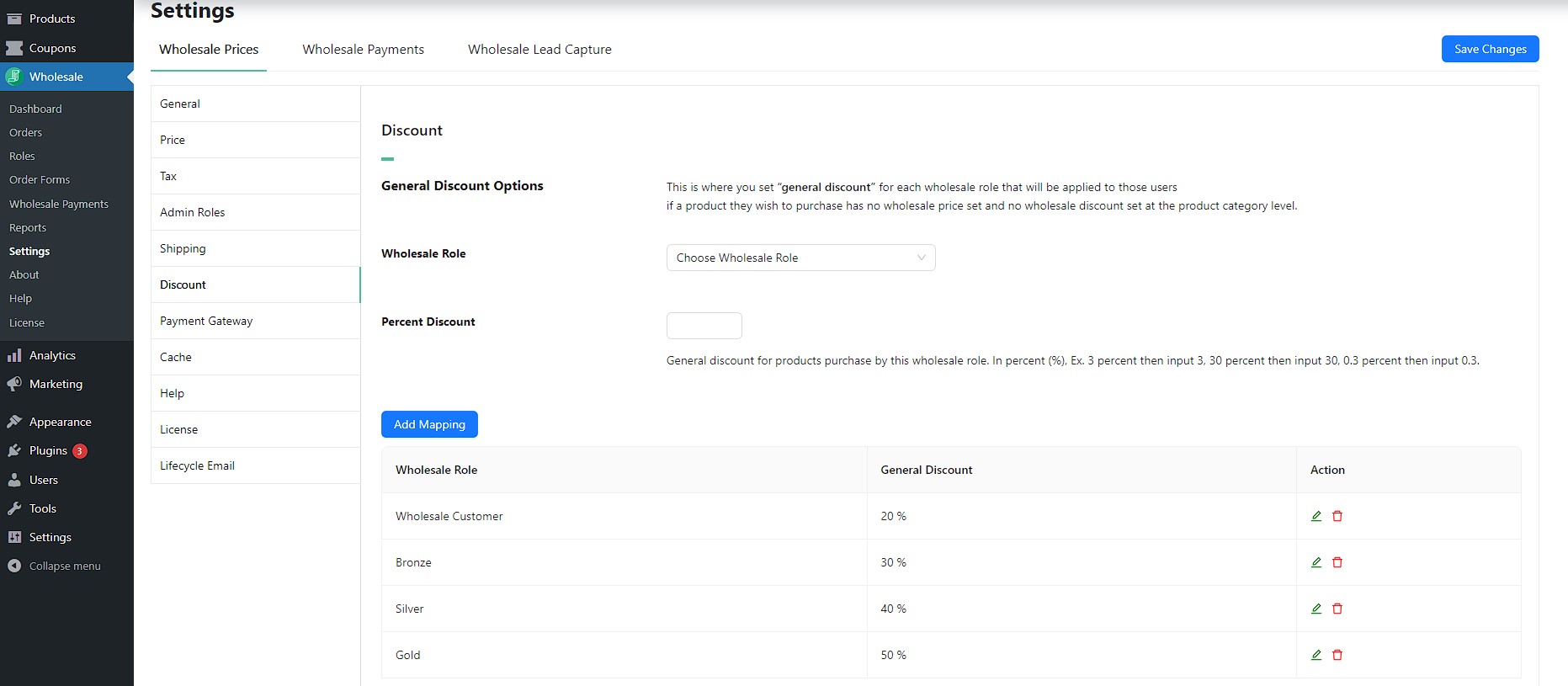
Another great tiered pricing strategy is offering different prices based on how often customers place orders. For instance, you can give a lower price to those who regularly make bulk purchases. This not only rewards loyal customers but also motivates them to keep coming back and stick to a regular order schedule.
Furthermore, you can sweeten the deal by adding extra services or features at higher pricing tiers. For example, offering free or discounted shipping to customers who reach the top tier can make a big difference. This adds extra value to your higher-priced options and gives customers more reasons to place bigger or more frequent orders.
Observing Best Practices
If you’re considering using tiered pricing strategies for your business, there are a few things to keep in mind. Below are best practices to consider:
1. Know your audience
The first step in any pricing method is to understand who your customers are. Who are your ideal customers? What do they want, and how much are they willing to pay for your product or service?
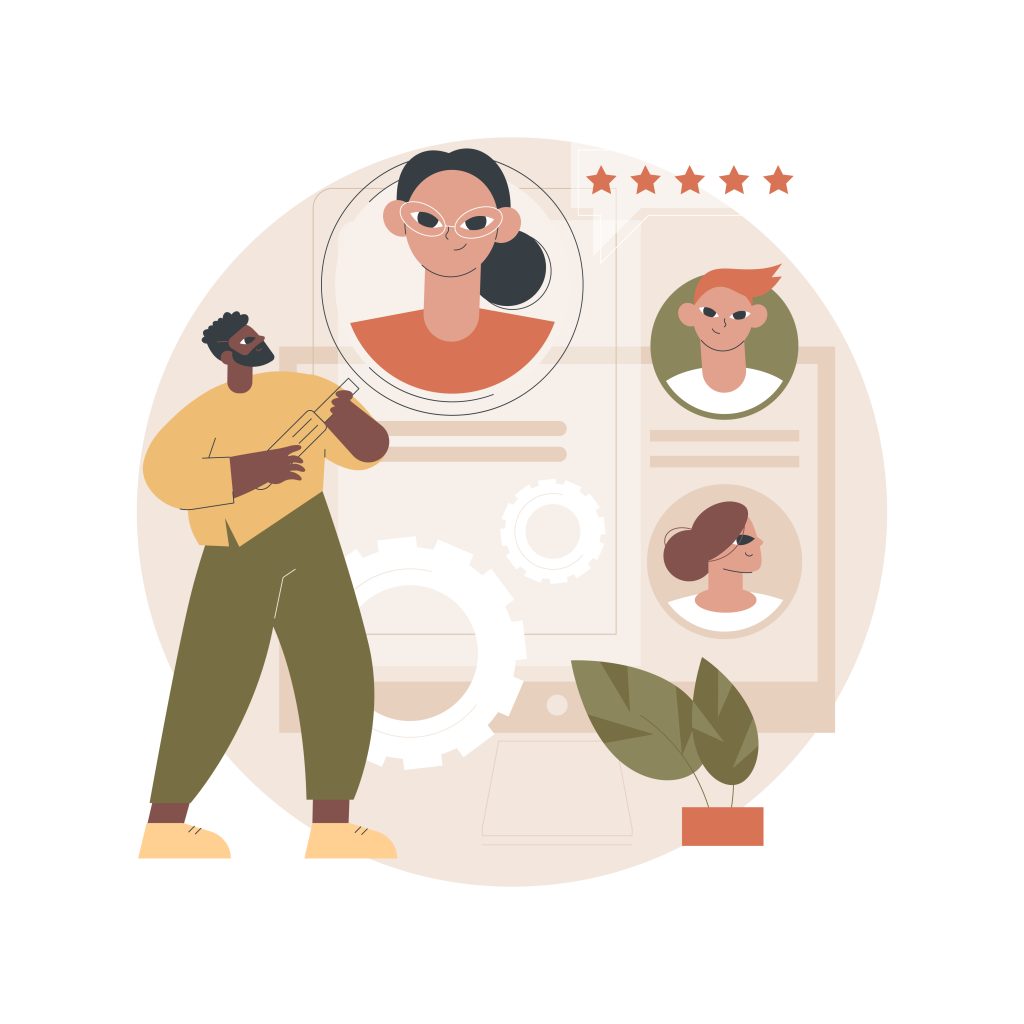
Doing some research will help you decide if your price tiering is correct. To find the right price, you need to know your customers well. You can’t charge high prices if your customers are looking for cheap deals.
Hence, it’s important to know how much money your average customer makes and what motivates them before setting your prices.
2. Know how your customers value your product
To set the right price, it’s important to understand what your customers believe your product is worth.
You need to break your product into different levels or segments and consider the value of each one separately. This means looking closely at each part to make sure the price matches what customers expect and are willing to pay.
By doing this, you can make sure your pricing is fair and attracts buyers, while still maximizing your profits.
3. Use localized pricing to reach more customers
Localized pricing is a smart strategy that can help you reach more customers. This approach isn’t just for tiered pricing but works well in general.
Different regions have varying levels of disposable income. This means that people in some areas can afford to spend more than in others. Additionally, different cultures may place higher value on certain features of your product.
By adjusting your prices to fit the economic conditions and cultural preferences of each location, you can boost the effectiveness of your pricing model strategy. This helps you attract more customers and maximize profits by making your product more appealing and affordable to a wider audience.
4. Offer simple choices
While having options is good, too many choices can be overwhelming for customers. It’s important to keep your pricing manageable.
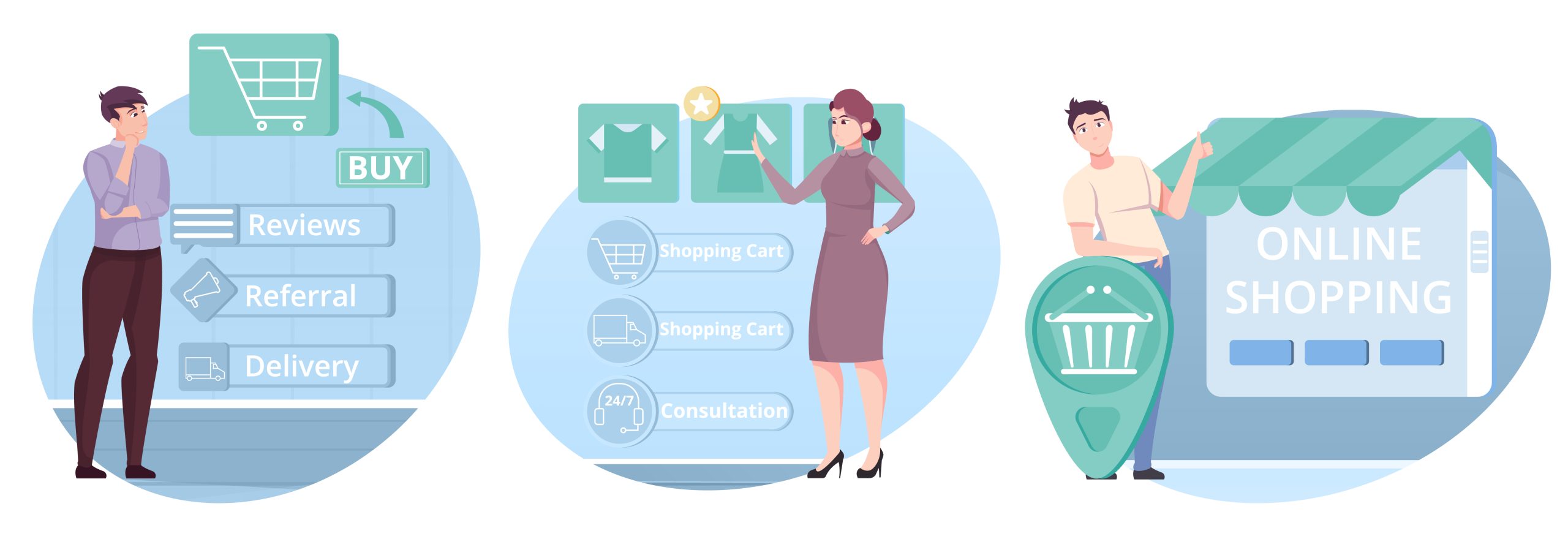
By limiting the options, you make it easier for customers to find the one that fits their needs best. For instance, Simple yet clear choices help customers make decisions more confidently. Additionally, this could lead to better satisfaction and more sales.
5. Test and refine your tiers regularly
Don’t set your pricing tiers and forget about them. It’s important to test and refine your pricing strategy regularly.
This means analyzing sales data, customer feedback, and market trends to see if your pricing is still effective. If you notice changes in customer behavior or market conditions, be ready to adjust your tiers to maintain their effectiveness.
6. Consider offering a free trial or entry-level tier
To attract new customers, consider offering a free trial or an entry-level tier with limited features. This allows customers to experience your product or service without committing to a higher-priced tier right away.
Once they see the value, they may be more likely to upgrade to a higher tier.
This approach not only brings in new customers but also builds trust. By letting them try your product first, you show that you believe in what you’re offering. This can make them feel more comfortable and confident in upgrading to a plan that better fits their needs.
Eventually, if customers keep placing repeat orders, they may become loyal to your brand. To encourage this loyalty and boost sales, you can consider offering a loyalty program. This program rewards customers for their continued business, and make them even more likely to keep coming back.
If you want to learn more about loyalty program, read how loyalty programs drive repeat sales in WooCommerce.
7. Incorporate customer feedback into your pricing strategy
Listen to what your customers are saying about your tier pricing. Are they happy with the value they’re getting? Do they find the tiers confusing or too limiting?
Customer feedback can provide valuable insights that you can use to tweak your pricing strategy and better meet their needs.

Listening to their feedback can give you helpful clues about what’s working and what’s not. Maybe you need to offer more benefits at a certain tier or simplify the options to make them easier to understand.
When you make changes based on what your customers actually want, you’ll be more likely to meet their needs and keep them happy with your business.
8. Offer time-limited promotions on specific tiers
Consider running time-limited promotions on specific tiers to encourage customers to upgrade or try a higher tier. For example, you could offer a discount on the premium tier for a limited time to entice customers to experience the full range of features. This can create urgency and help boost sales, especially if customers have been hesitant to upgrade.
9. Use Wholesale Suite to manage your tiered pricing
Our plugin offers a complete solution for wholesale businesses. You can use Wholesale Suite to extend the functionality of your WooCommerce features, including adding a tiered pricing model.
Our plugin makes it simple to set up and manage your wholesale pricing at different levels. You can choose between fixed-rate or percentage-based pricing, along with various pricing structures.
With WooCommerce Wholesale Prices Premium, you can define multiple tiers of wholesale user roles:
Additionally, you can apply a quantity-based discount system, where the percentage discount increases depending on the total amount of products from a specific category that customers add to their cart.
10. Reward loyalty
Consider offering discounts or rewards to customers who remain loyal to your product over time. A well-designed loyalty program not only encourages repeat business but also makes customers feel valued, increasing the likelihood they’ll stick with your brand.
To enhance your loyalty program, you can use tools like Advanced Coupons for WooCommerce. This plugin allows you to easily create loyalty points systems, offer special discounts, and send personalized coupons to your customers.
By rewarding customers with points, discounts, or special perks, you can build long-term relationships and make them more likely to upgrade to higher-priced tiers.
Frequently Asked Questions
What is the tiered pricing method?
The tiered pricing method is a way to set prices by dividing a product or service into different levels, or “tiers.” Each tier comes with a different price and offers different features or amounts. This allows customers to choose the option that best suits their needs and budget.
What is an example of tiered pricing?
An example of tiered pricing can be seen in wholesale pricing for a product. A business might offer three-tier pricing based on the quantity purchased.
For instance, if a retailer buys 100 units, they get a basic discount; if they buy 500 units, they get a larger discount (standard tier); and if they buy 1,000 units or more, they receive the premium discount with the lowest price per unit.
These type of tiered pricing and volume encourage retailers to purchase more to take advantage of better pricing, while still allowing flexibility based on their needs.
What are the three tiers of pricing?
The three tiers of pricing usually include a basic tier, which is the cheapest with the fewest features, a standard tier that offers more features at a mid-range price, and a premium tier that is the most expensive and comes with all the best features.
What are the disadvantages of using tiered pricing?
The three tiers of pricing usually include a basic tier, which is the cheapest with the fewest features, a standard tier that offers more features at a mid-range price, and a premium tier that is the most expensive and comes with all the best features. This tiered pricing strategy example can vary from business to business, depending on their products and customer needs.
Conclusion
Having pricing levels system can be an effective way to boost your revenues and better target your customers. When done right, it can help you grow your business while keeping costs down. However, it’s important to carefully consider all of the factors involved before you implement this structure.
In this article, we tackled how tiered pricing structure can be optimized in WooCommerce:
- Tiered pricing structure overview
- How this model works
- Tiered pricing structure models
- Examples and application
- Observing the best practices
Lastly, tiered pricing offers a versatile way for businesses to structure their prices and meet the needs of customers. By using tiered pricing examples like offering discounts for bulk orders or setting different prices based on order frequency, businesses can encourage customers to buy more and return often.
Do you have any questions about this topic? Let us know in the comments section below!


